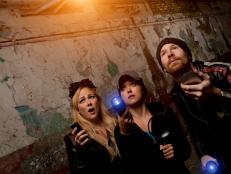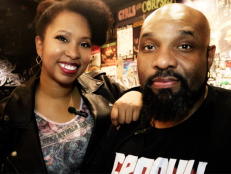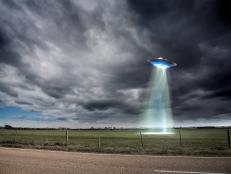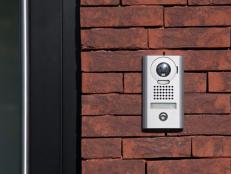Bathroom Etiquette Around the World: What You Need to Know
Use this guide to navigate international bathroom customs and facilities so you'll know before you go.
In August 2018, Paris introduced uritrottoirs, updated public urinals for men resembling red garbage cans, which allow hommes to, basically, pee in public. As anyone who travels knows, finding facilities, especially in big cities, can be a challenge. And when you travel abroad, things become even more complicated. So, since the types of bathrooms (and etiquette) vary around the world, Travel Channel decided to give readers a down-and-dirty guide to what to expect during their international travels.

Shutterstock/Simona Flamigni
Europe
The two main differences you’ll notice across Europe are the prevalence of bidets and pay toilets. Bidets are a toilet-bowl shaped fixture next to the toilet, which are used for cleansing. Don’t worry, toilet paper is readily available too.
Public toilets, typically found in train stations or near tourist attractions, often have an attendant standing guard to collect a small fee. The fee varies, but usually it’s the local equivalent to a quarter or two. Always keep some small change handy, since attendants aren’t keen on making exceptions, no matter how urgent your bathroom emergency.

Shutterstock/ Paul Gueu
The aforementioned uritrottoirs in Paris are a less private version of earlier pissoirs (no translation is really needed), and have caused some controversy due to their placement in highly trafficked areas, like this one (pictured) across the street from a restaurant.

Shutterstock/Paikong
Vienna’s underground toilets in the city center (the Jugendstil toilets in Graben) are worth a shout-out: designed in the 19th century, the bathrooms wouldn’t look out of place in a high-end hotel, featuring Art Nouveau tiled floors, marble floors and sliding stall doors.
Then there are pay toilets that are coin operated, commonly found in large cities on street corners. Melissa Kane of PortlyPassengers.com notes the rise in Healthmatic bathrooms across Europe, especially the United Kingdom. The timed, self-cleaning toilets are a reliable bet; Kane says that the ones in Bath, England, cost just 20 pence. “Once your time is up, you can either add additional money, or leave the restroom, which the door then locks behind you."
Another difference you might encounter in Europe are old-fashioned toilets that flush via a pull string — something you may encounter in other parts of the world with a colonial past.
Greece is a notable exception to the types of toilets you’ll find across much of Europe. Public squat toilets are not uncommon in more remote areas or budget places, and the pipes can’t handle toilet paper due to an ancient sewer system — no matter how nice the hotel or venue. Remember to place used toilet paper in the trashcan next to the toilet. That is, when toilet paper is available. It’s best to carry a pack of tissues when out and about for the day.
Russia and other parts of Eastern Europe are also home to public squat toilets outside of the touristy areas, although public toilets in general aren’t as common as other European countries. The level of cleanliness can also leave a lot to be desired. Bring a pack of tissues and hand sanitizer to err on the safe side, or stick to using hotel and restaurant bathrooms whenever possible.

Shutterstock/ MicheleB
It goes without saying that you must learn the local lingo and signage for the word "bathroom" no matter where you travel. In this part of the world, look for the letters WC, or water closet.
Turkey
For the sake of this guide, Turkey gets its own category since it borders Europe, the Middle East and Asia. Like Greece, don’t be surprised to find public squat toilets, and not just in small towns. But clean, modern public bathrooms abound as well; instead of attendants, turnstiles are common at pay toilets. It’s best to BYOT here (whether tissues or toilet paper), both of which can sometimes be flushed down the toilet, but not always. Be alert for bathroom signs and a strategically placed trashcan.
Middle East
As with any region, the types of bathrooms you’ll encounter in the Middle East depend on the country, where you’re staying and where you’re visiting. You’ll find clean, Western-style public toilets in places like the United Arab Emirates (Dubai, Abu Dhabi), Jordan and Israel, although squat toilets still exist in less visited areas. Toilet paper isn’t a given across the Middle East, as the culture tends to favor using a hose (like a bidet) instead.

Shutterstock/Daphne T
And like many non-Western places around the world, proper bathroom etiquette means that the left hand is used to take care of business, while the right hand is used to eat. Regardless of your personal hygiene habits, just remember: Never eat with your left hand.
Africa
Again, expect the gamut here, from Western-style toilets in South Africa, to the occasional squat toilet in Muslim countries (Morocco, Sudan, Tunisia) to the prevalent squat toilet in less-developed countries. Exceptions are to be found in hotels, restaurants and other businesses and venues catering to foreigners.
Like the Middle East, don’t use your left hand to eat, and a post-rinse is favored over toilet paper in many countries. Don’t assume that toilet paper can always be flushed, so pay attention to bathroom signs.
Even though a longtime tourist haven, it’s best to have low bathroom expectations for Egypt: squat toilets are common outside of touristy areas and public bathrooms aren’t readily found — when they are, a bathroom attendant will expect a tip in exchange for toilet paper.
Asia
When you think of bathrooms in this part of the world, Japan is one of the first places that spring to mind, thanks to its famous high-tech toilets. Here, your biggest concern won’t involve a lack of toilet paper or where to find a bathroom, but rather, how to use the smart toilets that are everywhere. You almost need a manual to decode the myriad buttons: There are typically several for cleaning (front, back and water pressure level), one for drying and one to flush. Oh, and one to mask any unseemly sounds.
Understanding proper bathroom etiquette is another must in Japan. “If you stay in a more traditional Japanese ryokan or visit a Japanese home, note that you are given one set of slippers for indoor use, but there are another pair of slippers that are in the bathroom and only for bathroom use,” says Hilary Stockton, CEO of TravelSort.com.
The bathroom situation in China is more of a guessing game in terms of encountering Western or squat toilets, but again, there are so many factors. Other aspects are easier to prep for: “When traveling in China, unless you are in a super high-end place in large cities, be sure to bring your own toilet paper and wet wipes (as many places don’t provide soap),” says Menghan Wang, co-founder of TheTravelBrief.com.
Of course there are exceptions. “The public bathrooms in Shanghai are actually all very clean and have good amenities — and they are free,” she adds.
India’s also home to disparate bathroom set-ups. You’ll find clean, modern bathrooms in hotels and restaurants catering to foreigners and well-off locals, complete with toilet paper than can be flushed. Public bathrooms, when available, even in major cities, will likely be of the squat variety, without toilet paper and with questionable cleanliness. Even at major airports, it’s not uncommon to find bathrooms on par with the U.S. in the international terminal, and squat toilets in the domestic terminal (but they’re well-maintained).
South Korea can be confusing because even though toilet paper can be flushed, Will Jones of OneCountryMore.com says that many locals don’t, simply because sewer pipes weren’t upgraded to accommodate toilet paper until the 1980s. As a result, old habits run deep for some, but feel free to flush away here.
South America
You’ll find a mix of squat and Western toilets throughout the continent, but one consistent is the inability to flush toilet paper — when it’s even available — so be sure to toss it in the neighboring trashcan. “Plumbing is not as advanced, sometimes very old, or otherwise non-existent,” says Juliana Dever of CleverDeverWherever.com. She adds, “I’d also recommend a pocketful of small coins. Rare is the case that you don’t pay to use the restroom in most small towns, rest stops, airports and bus stations.”
Note that bidets are common throughout Argentina, Brazil and Uruguay.
Meanwhile, Venezuela’s ongoing economic crisis has resulted in widespread toilet paper shortages: It’s a good idea to pack your own, both for your own use and for local donations.
Where to Find Bathrooms in Major Cities:
Public bathrooms are never a given, nor is the level of cleanliness. So where to go? (Pun intended.) Safe bets that are usually free, clean, and without anyone questioning you include department stores, malls, bookstores, libraries and nice supermarkets. Hotels can work if the lobby bathrooms don’t require a code, while many museum bathrooms are posted in the lobby, allowing you to skirt the admission fee. Crowded restaurants, cafes or bars are another good bet, since employees are less likely to notice if you just slipped in for the facilities. Be sure to research options ahead of time, since some cities that are notorious for their lack of decent public bathrooms (like NYC) may surprise you. Though not as well known to tourists, New York’s Bryant Park has long been home to an upscale bathroom staffed by a full-time attendant and decorated daily with fresh flowers. The bathroom received a $300,000 infusion in 2017, resulting in Toto toilets, imported tiles and crown molding. If only every public bathroom were this nice.
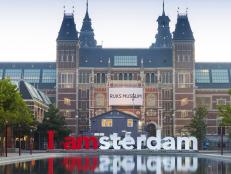







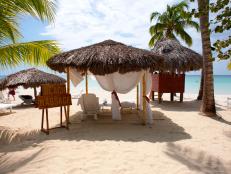














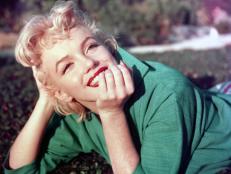



.jpg.rend.hgtvcom.231.174.suffix/1674758726773.jpeg)



